| 3 July |
• yesterday • tomorrow |
| Feast of Saint Thomas the Apostle |
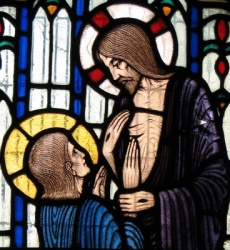
• Apostle of India
• Didymus
• Doubting Thomas
• Judas Thomas
• the Twin
• Tomaso
Apostle. He was ready to die with Jesus when Christ went to Jerusalem, but is best remembered for doubting the Resurrection until allowed to touch Christ's wounds. Preached in Parthia, Persia and India, though he was so reluctant to start the mission that he had to be taken into slavery by a merchant headed that way. He eventually gave in to God's will, was freed, and planted the new Church over a wide area. He formed many parishes and built many churches along the way. An old tradition says that Thomas baptised the wise men from the Nativity into Christianity.
His symbol is the builder's square; there are several stories that explain it
• he built a palace for King Guduphara in India
• he built the first church in India with his own hands
• it is representative building a strong spiritual foundation as he had complete faith in Christ (though initially less in the Resurrection)
• he offered to build a palace for an Indian king that would last forever; the king gave him money, which Thomas promptly gave away to the poor; he explained that the palace he was building was in heaven, not on earth
• stabbed with a spear c.72 in while in prayer on a hill in Mylapur, India
• buried near the site of his death
• relics later moved to Edessa, Mesopotamia
• relics moved to Tortona, Italy in the 13th century
• people in doubt; against doubt
• architects
• blind people and against blindness
• builders
• construction workers
• geometricians
• stone masons and stone cutters
• surveyors
• theologians
• Ceylon
• East Indies
• India
• Indonesia
• Malaysia
• Pakistan
• Singapore
• Sri Lanka
• diocese of Bathery, India
• Castelfranco di Sopra, Italy
• Certaldo, Italy
• Ortona, Italy
• arrow
• builder's rule
• spear
• t-square
"Thomas, one of the twelve, called the Twin, was not with them when Jesus came." He was the only disciple absent; on his return he heard what had happened but refused to believe it. The Lord came a second time; he offered his side for the disbelieving disciple to touch, held out his hands, and showing the scars of his wounds, healed the wound of disbelief. Dearly beloved, what do you see in these events? Do you really believe that it was by chance that this chosen disciple was absent, then came and heard, heard and doubted, doubted and touched, touched and believed? It was not by chance but in God's providence. In a marvelous way God's mercy arranged that the disbelieving disciple, in touching the wounds of his master's body, should heal our wounds of disbelief. The disbelief of Thomas has done more for our faith than the faith of the other disciples. As he touches Christ and is won over to belief, every doubt is cast aside and our faith is strengthened. So the disciple who doubted, then felt Christ's wounds, becomes a witness to the reality of the resurrection. Touching Christ, he cried out: "'My Lord and my God.' Jesus said to him: 'Because you have seen me, Thomas, you have believed.'" Paul said: "Faith is the guarantee of things hoped for, the evidence of things unseen." It is clear, then, that faith is the proof of what cannot be seen. What is seen gives knowledge, not faith. When Thomas saw and touched, why was he told: "You have believed because you have seen me?" Because what he saw and what he believed were different things. God cannot be seen by mortal man. Thomas saw a human being, whom he acknowledged to be God, and said: "My Lord and my God." Seeing, he believed ; looking at one who was true man, he cried out that this was God, the God he could not see. What follows is reason for great joy: "Blessed are those who have not seen and have believed." There is here a particular reference to ourselves. We are included in these words, but only if we follow up our faith with good works. The true believer practices what he believes. But of those who pay only lip service to faith, Paul has this to say: "They profess to know God, but they deny him in their works." Therefore James says: "Faith without works is dead." - from a homily by Pope Saint Gregory the Great
https://catholicsaints.info/saint-thomas-the-apostle/
Anatolius of Laodicea
Noted scientist, philosopher, scholar, teacher, and writer. He wrote ten books on mathematics alone, and Saint Jerome praised his scholarship and writing. Head of the Aristotlean school in Alexandria, Egypt. However, he was known not just as a scholar but as a humble and deeply religious man. Ignorance horrified him, and part of his work with the poor was to educate them. Held a number of government posts in Alexandria.
During a rebellion against the Roman authorities in 263, the area of Alexandria was under seige, resulting in the starvation of both rebels and citizens who had nothing to do with the uprising. Anatolius met with the Romans and negotiated the release of non-combatant children, women, the sick, and the elderly, saving many, and earning him a reputation as a peacemaker. The rebels, freed of caring for the non-combatants, were able to fight even longer. However, when they lost, Anatolius found himself with enemies on each side of the conflict, and he decided to leave Alexandria.
Anatolius emigrated to Caesaria, Palestine. His reputation as a scholar and Christian had preceeded him, and he became assistant and advisor to the bishop. In 268, while en route to the Council of Antioch, he passed through Laodicea, Syria. Their bishop, Saint Eusebius of Laodicea, had just died, they saw Anatolius' arrival as a gift from God, and insisted that he assume the bishopric. He accepted, and spent his remaining fifteen years there.
Alexandria, Egypt
283 at Laodicea, Syria of natural causes
bishop with globes and mathematical books
https://catholicsaints.info/saint-anatolius-of-alexandria/
• Eusebius of Alexandria
• Eusebio of...
Deacon in Alexandria, Egypt, serving under Saint Dionysius the Great. Exiled to Kefro, Libya in the persecutions of emperor Valerian c.255 for refusing to sacrifice to idols, Eusebius went into hiding to avoid the sentence, ministered to other covert Christians for several years, and cared for the sick during a plague outbreak in 260. Negotiated the surrender of women, children and elderly men to Roman troops during a siege of the Brucchium section of Alexandria. Represented his bishop at the Synod of Antioch which dealt with the heresey of Paul of Samosata and the false doctrines of Adoptionism and Monarchianism. Bishop of Laodicea, Syria (modern Latakia, Syria). A shory biography of him was included by Saint Eusebius of Caesarea in his Church History.
3rd century Egypt
269 in Laodicea, Syria (modern Latakia, Syria) of natural causes
https://catholicsaints.info/saint-eusebius-of-laodicea/
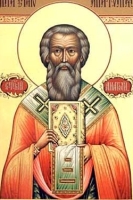
Patriarch of Constantinople from 449 to 458. Known for his simple, austere life, his charity to the poor, his zeal for the faith, and his opposition to heresy. He opposed the heretic Dioscurus at the Council of Chalcedon, and supported the doctrinal authority of Pope Saint Leo the Great, which put him in the midst of both theological and political turmoil. He fought against the Nestorian heresy at the Council of Ephesus. Miraculously healed from a serious illness by Saint Daniel the Stylite. May have been murdered by local heretics for his support of the Pope. Some of his writings, correspondence and hymns have survived the centuries.
458 of unknown circumstances
https://catholicsaints.info/saint-anatolius-of-constantinople/
Prince who became a hermit in Brittany. The local lord, Grallon, gave Gunthiern land on the Isle of Groie, near River Blavet to found a monastery. It survives today as the Benedictine house of Kemperle.
Legend says that insects once threatened to destroy the region's crops. Count Guerech I of Vannes, France, requested the saint's help. Gunthiern blessed some water and had it sprinkled over the fields. The insects fled, and the crops were saved.
Welsh
• c.500 in Brittany (in modern France) of natural causes
• his body was hidden during the Norman invasions, and was lost for a while
• remains re-discovered in the 11th century
• relics were translated to the Kemperle monastery
https://catholicsaints.info/saint-gunthiern/
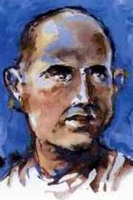
• Giuseppe Nguyen Dinh Uyen
• Joseph Peter Uyen
24 November as one of the Martyrs of Vietnam
Layman Dominican tertiary and catechist. Died after being imprisoned for his faith during the persecutions of Emperor Minh Mang. Martyr.
c.1775 in Ninh Cuong, Nam Ðinh, East Tonkin (in modern Vietnam)
4 July 1838 in prison in Hung Yên, East Tonkin (modern Viet Nam from the ill treatment he received there
19 June 1988 by Pope John Paul II
https://catholicsaints.info/saint-giuse-nguyen-dinh-uyen/
• Raymond Gayrard
• Raimund, Raimundus
Married layman. Widower. Cantor, archdeacon and canon of Saint Sernin church in Toulouse, France. Helped rebuild the church. Known for his austere lifestyle, charity and generosity to the poor, and his good relations with the local Jewish community.
at Toulouse, France as Raymond Gayrard
• 3 July 1118 of natural causes
• many miracles reported at his tomb, and the church became a popular pilgrimage site
1652 by Pope Innocent X (cultus confirmation)
https://catholicsaints.info/saint-raymond-of-toulouse/
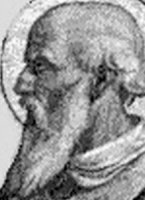
Pope. Eloquent preacher. Interested in music. Noted for his charity to the poor. Confirmed the Sixth Council of Constantinople in 681 which condemned Monthelitism and censured Pope Honorius I for not doing the same. Secured revocation of the edict of Constans II which proclaimed the bishops of Ravenna, Italy free from the direct jurisdiction of the Bishop of Rome.
Sicilian
• elected 10 January 681
• consecrated on 17 August 682
28 June 683 in Rome, Italy of natural causes
https://catholicsaints.info/pope-saint-leo-ii/
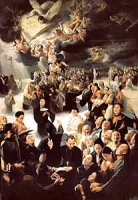
• Zhao Mingxi Ioannes Baptista
• Ruohan
• Giovan Battista Zhao Mingxi
Layman Christian in the apostolic vicariate of Southeastern Zhili, China. Martyred in the Boxer Rebellion while trying to rescue some women and children from the rebels.
c.1844 in Beiwangtou, Shenzhou, Hebei, China
3 July 1900 in Beiwangtou, Shenzhou, Hebei, China
1 October 2000 by Pope John Paul II
https://catholicsaints.info/saint-ioannes-baptista-zhao-mingxi/
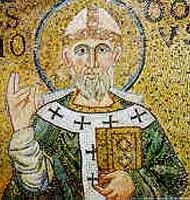
• Heliodorus of Altino
• Eliodoro...
A soldier in his youth. Close friend and financial supporter of Saint Jerome, and helped with the logistics of the translation of the Vulgate Bible. Followed Jerome to the east, but declined the life of a desert hermit. Bishop of Altinum, a small town near Venice, Italy which has since disappeared. Fierce opponent of Arianism.
332 at Dalmatia
390 at Altino, Italy of natural causes
https://catholicsaints.info/saint-heliodorus-of-altinum/
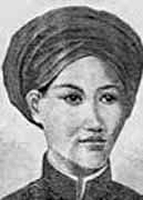
• Filippo Phan Van Minh
• Philip Minh
Priest in the the apostolic vicariate of West Cochinchina (in modern Vietnam). Member of the Paris Society for Foreign Missions. Martyred in the persecutions of Emperor Tu-Duc.
c.1815 at Cái Mon, Vinh Long, West Cochin-China (modern Vietnam)
beheaded on 3 July 1853 at Ðinh Khao, Vietnam
19 June 1988 by Pope John Paul II
https://catholicsaints.info/saint-philiphe-phan-van-minh/

• Baiduo
• Zhao Mingzhen Petrus
• Pietro Zhao Mingzhen
Layman Christian in the apostolic vicariate of Southeastern Zhili, China. Martyred in the Boxer Rebellion while trying to rescue some women and children from the rebels.
c.1839 in Beiwangtou, Shenzhou, Hebei, China
3 July 1900 in Beiwangtou, Shenzhou, Hebei, China
1 October 2000 by Pope John Paul II
https://catholicsaints.info/saint-petrus-zhao-mingzhen/
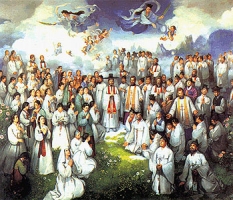
20 September as one of the Martyrs of Korea
Lay woman martyr in the apostolic vicariate of Korea. Convert to Catholicism. Moving to Seoul, she founded a group of other Christian lay women who wanted to live in community. Martyr.
1777 in Yeoju, Gyeonggi-do, South Korea
3 - 4 July 1801 in Yeoju, Gyeonggi-do, South Korea
15 August 2014 by Pope Francis
https://catholicsaints.info/blessed-barbara-jeong-sun-mae/
Premonstratensian monk. Canon of the monastery in Teplá, Bohemia (in the modern Czech Republic). Abbot of Teplá in 1599; he served in that office for 30 years. Known for his strict adhereance to the Rule of his Order, and commended by diocesan authorities for his work as a Christian catechist and apologist.
c.1554 in the modern Czech Republic
3 July 1629 of natural causes
https://catholicsaints.info/blessed-andreas-ebersbach/
Ireneo
Deacon. Tortured and martyred with Saint Mustiola for ministering to Christian prisoners, and giving proper burial to martyrs.
273 at Chiusi, Tuscany, Italy
Chiusi, Italy
• deacon holding a palm
• with Saint Mustiola
• with Saint Secundus
https://catholicsaints.info/saint-irenaeus-of-chiusi/
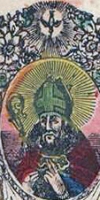
Germain, German, Jarman
Nephew of Saint Patrick. Missionary monk in Ireland, Wales and Brittany. Bishop on the Isle of Man where several locations are still named for him.
c.474 of natural causes
https://catholicsaints.info/saint-germanus-3-july/
Datus, Dathius
Bishop of Ravenna, Italy during the reign of the Roman emperor Commodus. Elected to the see when a dove miraculously appeared over his head during the deliberations.
190 of natural causes
dove
https://catholicsaints.info/saint-dathus-of-ravenna/
Chamberlain to the emperor Trajan at Caesarea, Cappadocia. Imprisoned for his faith, his only food was meat that had been offered to idols; he starved rather than touch it. Martyr.
starved to death c.120 in Caesarea, Cappadocia (in modern Turkey)
https://catholicsaints.info/saint-hyacinth-of-caesarea/
Memnon
Centurian in the imperial army in the reign of Diocletian and Maximian. Convert, brought to the faith by Saint Severus. Tortured and murdered for his new faith. Martyr.
Byzie, Thrace (modern Vize, turkey)
https://catholicsaints.info/saint-mennone-the-centurian/
One of seven Christian brothers who were soldiers in the imperial Roman army. Kicked out of the military, exiled and eventually martyred in the persecutions of Maximian.
c.311 at Apsaros (in modern Georgia)
https://catholicsaints.info/saint-firminus-of-apsaros/
One of seven Christian brothers who were soldiers in the imperial Roman army. Kicked out of the military, exiled and eventually martyred in the persecutions of Maximian.
c.311 at Apsaros (in modern Georgia)
https://catholicsaints.info/saint-firmus-of-apsaros/
May have been Irish royalty. Hermit at Oostkerk, Flanders, Belgium.
Eighth century Ireland
• in Belgium of natural causes
• many miracles reported at this tomb
• relics translated on 3 July 1059
https://catholicsaints.info/saint-guthagon/
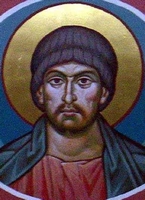
Martyr of the early Church for refusing to sacrifice to idols.
beheaded in Mesia (in modern Spain)
https://catholicsaints.info/saint-mark-of-mesia/
Marianus O'Gorman
Abbot of Knock, Louth, Ireland. Noted as a poet.
Irish
some time after 1167 of natural causes
https://catholicsaints.info/saint-maelmuire-ogorman/
Mocian
Martyr of the early Church for refusing to sacrifice to idols.
beheaded in Mesia (in modern Spain)
https://catholicsaints.info/saint-mucian-of-mesia/
Biblig, Peblig, Peglig, Piblig, Publicius
A holy man with some connection to Carnarvon, Wales.
Welsh
5th century
https://catholicsaints.info/saint-byblig/
Monk. Abbot of a monastery near Douai, France. Friend of and extensive correspondent with Saint Anselm of Canterbury.
1123 of natural causes
https://catholicsaints.info/blessed-gelduin/
Killen
Monk. Elected abbot in Iona Abbey in Scotland in 726.
Irish
752 of natural causes
https://catholicsaints.info/saint-cillene/
Martyr of the early Church, executed for encouraging other martyrs not to lose their faith.
put to the sword
https://catholicsaints.info/saint-paul-of-mesia/
Blade
Early bishop on the Isle of Man.
https://catholicsaints.info/saint-bladus/
Thirteen Christian companions marytred together. No details about them have survived but the names - Apricus, Cyrion (2 of), Eulogius, Hemerion, Julian, Julius, Justus, Menelaus, Orestes, Porfyrios and Tryphon (2 of).
Alexandria, Egypt, date unknown
https://catholicsaints.info/martyrs-of-alexandria-3-july/
A group of 24 Christians martyred in the persecutions of Arian emperor Valens. We know little more than their names – Acacios, Amedinos, Ammonius, Ammus, Cerealis, Cionia, Cionius, Cyrianus, Demetrius, Eulogius (2), Euphemia, Heliodoros, Heraclios, Horestes, Jocundus, Julian, Martyrios, Menelaeus, Sestratus, Strategos, Thomas, Timotheos and Tryphon.
c.367 in Constantintinople
https://catholicsaints.info/martyrs-of-constantinople-3-july/
Six Christians who were imprisoned, tortured and martyred together in the persecutions of Trajan. Saint Hyacinth ministered to them in prison. We know nothing else about them but their names - Asclepiodotus, Diomedes, Eulampius, Golinduchus, Theodota and Theodotus.
beheaded c.110, location unknown
https://catholicsaints.info/theodotus-and-companions/
• Andreas Ebersbach
• Tírechán
CatholicSaints.Info Portable Edition